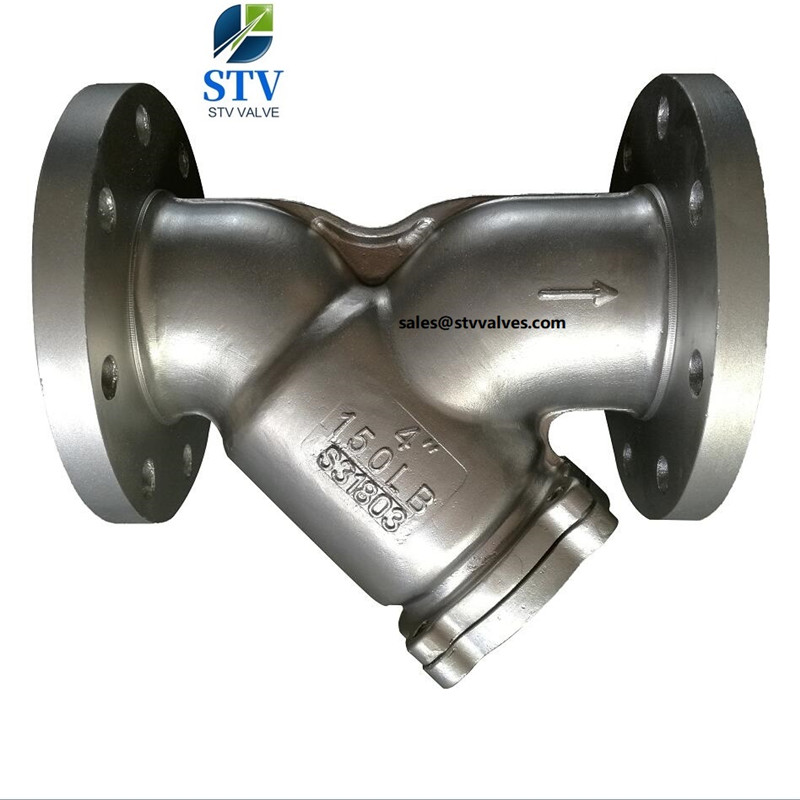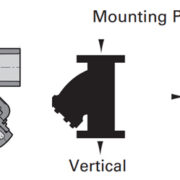What is a Y strainer?

There are styles of strainers, basket and y. The y strainer is generally used wherein there’s a small quantity of cloth to be amassed. This strainer may be established inside the horizontal or vertical function. The basket must be to the bottom of the pipe or dealing with the down flow direction to collect the particles. A y strainer can include a blow-off connection for automatic cleansing. With drinks, y strainers have a greater strain drop than basket strainers because of their length (comparing identical sizes). However, with gases a y strainer has a enormously low-strain drop.
Y type strainers are used to remove impurities from liquid and gas lines. They are fitted into piping systems to protect pumps and control valves from getting damaged by the solid debris. Y strainers are the most common type of industrial strainers and are used in systems where the amount of debris to be removed is low; they are also cost-effective as compared to other types of strainers. They are also flexible and can be applied in different ways, making them a good fit for all piping systems.
It is also important to note that the cost of the y strainer is nothing compared to the amount of money you will spend on replacing your mechanical equipment such as pumps, turbines and heat exchangers if they get damaged due to lack of the strainer. In this blog, we are going to have an indepth look at how the y strainer works to protect your apparatus.
How to Install the Y Strainer

The Y strainers can be used in a horizontal or vertical manner, depending on your system and preference. Before installing your strainer, ensure that you keenly analyse the direction of the blowdown chamber, which is the chamber that collects the debris. The fliter leg of the Y strainer should be in a downward position so as to ensure that the trapped impurities do not get back into the system. While installing a large y strainer, it is important to include pipe fittings to support the piping.
Another important factor to note before installing the Y strainer is that the pressure rating of the strainer should coincide with that of the system. The Installation of the y strainer critically depends on the kind of strainer you have. Ensure that you fully understand the kind of strainer you have before installing it. Always read through the manual carefully before starting your installation process.
Y strainers work in different kinds of systems, mainly liquid and steam chambers. However, when buying a y strainer for steam service, always ensure that you notify your supplier so they can know the type of y strainer that will work for you. In most instances, you will be provided with a special housing for steam works.
As liquid flows through the y strainer, the screen of the strainer obstructs the flow and collects the debris from the liquid before allowing the process to continue. This obstruction causes the pressure of the liquid to drop, which is commonly referred to as pressure drop in the strainer. The draining plug, which is made up of two metal plates, forms a seal that prevents the liquid from flowing out of the chamber. This keeps the filtered and unfiltered liquid from mixing.
The mesh on the y strainer then traps any form of impurities from the liquid and prevents them from flowing to other parts of the system. This is how the y strainer works to protect dirt particles from getting to the main system parts. Y strainers work in high-velocity systems where the pressure is up to 6,000 psi.
How the y strainer works makes it a better choice in comparison to basket strainers which are built for pressures of up to 1500 psi. There are different ways in which you can connect the y strainer to your pipeline. You can either thread it or bolt it to the flange. This majorly depends on the kind of material used on the strainer. Y strainers are made out of different materials, mainly stainless steel, iron and cast iron. Some are made from carbon and bronze.
Maintenance of the Y Strainer
Compared to other types of industrial strainers, the Y strainer requires very minimal maintenance which makes it your most ideal kind of strainer. However, it is critical to keep tabs of the pressure in the system to ensure that the strainer does not get clogged. The Y strainer is cleaned manually by removing the screen completely which means that the system has to stop entirely during cleaning. Let us have a quick look at how you can ensure that your y strainer is in the best condition to perform its functions.
Install a Pressure Gauge: It is easy to forget to monitor the pressure of your system, especially if you have several systems running simultaneously. In this case, a pressure gauge will help you perform this task effectively and alert you in case of any pending pressure drops. This will help you schedule your cleaning before the strainer gets completely damaged due to extreme clogging.
Install a Blow-down Connection: Instead of having to take the Y strainer apart every time it needs cleaning, opt for a blowdown connection whereby a gate valve is connected to the end of the system, allowing you to to clean out the debris down the drain as the system stays put. This will save the time used to disconnect and reconnect the y strainer, hence limiting the system downtimes.
Have Extra Screens at Hand: This enables you to save the time used to clean and put back the screes of the strainer. A few replacement screens can be used as the dirty one gets cleaned for the future. This is also in an effort to avoid any system downtimes.
Always Depressurize before Cleaning: Before opening up your y strainer for cleaning purposes, always ensure that the pressure is low. Cleaning out pressurized strainers can cause serious injury to the handler and damage the strainer.
Do Not Overwork Your Strainer: Always ensure that you get the right kind of industrial strainer for your system so that you do not end up overworking your strainer.
Pros of the Y Strainer
The flexibility of the Y strainer allows you to apply it in different ways, either vertically or horizontally. This is not the case with basket strainers which can only be applied in a horizontal position.
How the y strainer works makes it ideal for high-pressure systems as it can withstand very high pressures as compared to other types of strainers.
Y strainers are cheaper in price compared to other industrial strainers. Their small and compact size makes them more price friendly.
Y strainers require very minimal maintenance and can be reused several times, as long as they are properly cleaned to prevent clogging of the strainer.
Cons of the Y Strainer
Cleaning of the Y strainer requires an interruption of the whole system which leads to frequent downtimes. This gives the duplex basket strainer an upper hand due to the fact that one basket can be kept running while the other one is getting cleaned.
The small screen of the Y strainer cannot accommodate high concentration of impurities, making it suitable for systems with very minimal filtration work.
Conclusion
The Y strainer is the most common type of strainer found in most piping systems. Compared to other types of industrial strainers, the y strainer is very easy to install, and you can start up your system sooner with this strainer. It also comes in different types of material, the most common one being stainless steel. Depending on your system needs, let us supply you with an ideal y strainer to perform your tasks. Visit our website for more information on the Y strainer and other types of industrial strainers.



